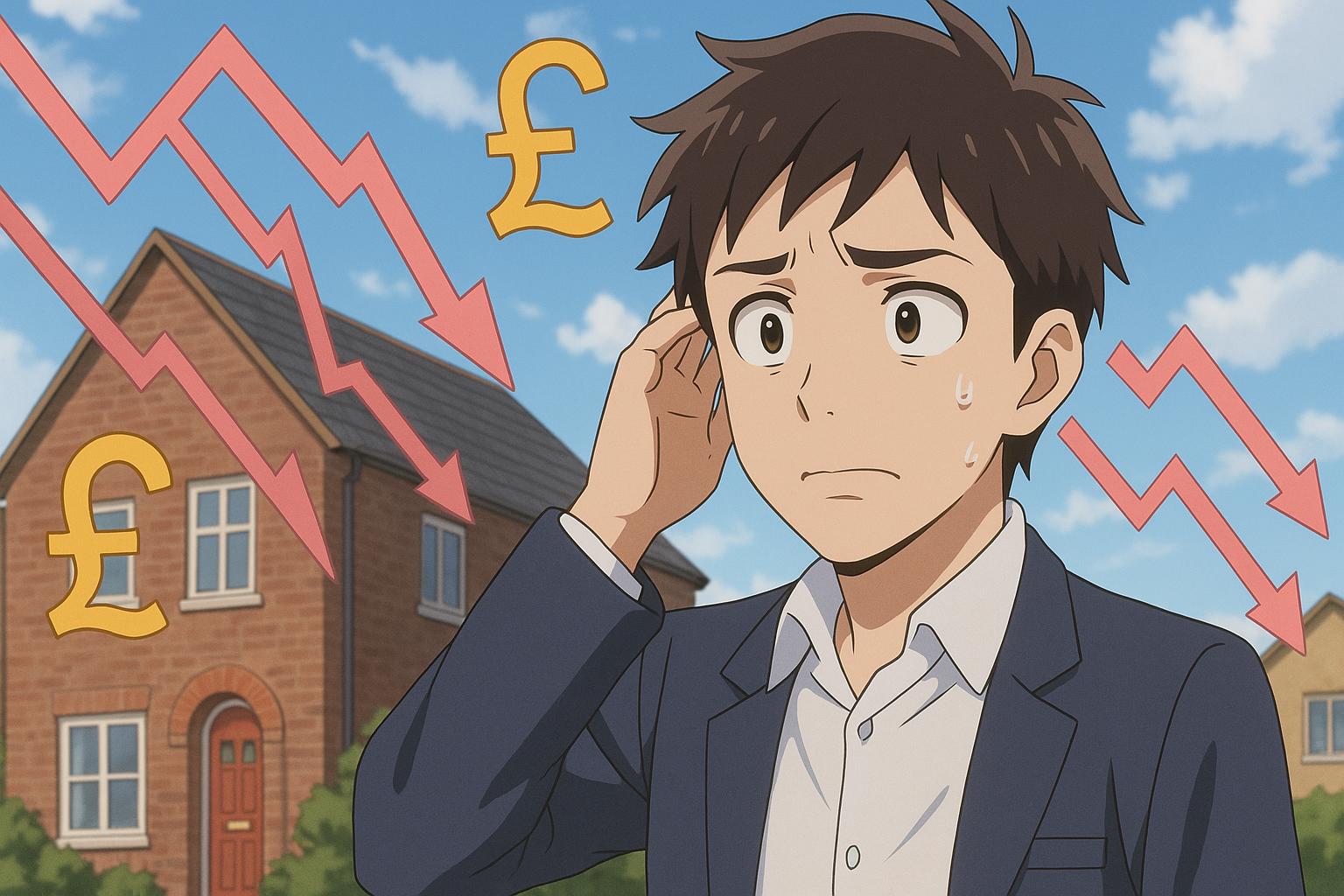Mortgage approvals in the UK dropped sharply to their lowest levels since February 2024, driven by the end of a temporary stamp duty exemption. Despite stronger-than-expected house price growth in May, experts warn of ongoing market vulnerabilities amid rising living costs and borrowing challenges.
The UK housing market has faced a notable downturn as mortgage approvals plummeted to their lowest level in over a year, a consequence of recent shifts in tax policy. In April 2025, the number of mortgages approved by British lenders dropped to 60,463, a substantial decline from the revised total of 63,603 in March, marking the lowest figures since February 2024. This steep fall was largely attributed to buyers rushing to secure properties before the expiration of a temporary stamp duty exemption, leading to an unexpected contraction against forecasts that had predicted a lesser decline.
Net mortgage lending was equally impacted, with a significant reduction of £759 million during April, the most considerable drop since January 2024, following a sharp increase of £12.963 billion in March. Analysts suggest that the weakness observed in April might not solely stem from buyers bringing forward purchases. Ruth Gregory, Deputy Chief Economist at Capital Economics, indicated potential long-term vulnerabilities, commenting on risks that could undermine the projected 3.5 per cent annual house price growth for the fourth quarter of 2025.
Despite these setbacks, the Nationwide Building Society reported stronger-than-expected house price growth of 3.5 per cent year-on-year in May. The bank attributes this resilience to robust underlying demand, driven by low unemployment rates and wages that continue to outpace inflation. This presents a somewhat paradoxical picture of the housing market: while recent months have demonstrated volatility, underlying economic indicators remain relatively strong. However, the prospective impact of rising living costs, in light of increasing household bills, looms large over future housing market forecasts.
Additionally, historical context reveals that this decline in mortgage approvals is part of a broader trend. For example, recent figures indicated similar challenges in the market, particularly concerning rising interest rates, which have made borrowing more expensive. Back in September 2023, approvals were noted to have dropped to levels not seen since January of that year, as higher rates began to weigh heavily on residential lending. The cumulative effect of these rate increases has fostered a challenging environment for potential homebuyers, contributing to elevated concerns surrounding affordability and market stability.
The examination of borrowing practices also reveals that, despite the dip in approvals, there has been a continued rise in unsecured consumer lending, which increased by £1.580 billion in April. This uptick in borrowing suggests that consumer demand remains relatively strong, countering the narrative of a faltering economy. However, experts from KPMG caution that this could indicate a strain on household finances, as families may be resorting to additional credit to cope with increased living expenses.
The interplay of these various economic factors indicates that while the immediate future of the UK housing market may appear daunting, with declining approvals and rising costs, certain indicators hint at a resilient undercurrent that could shape recovery in the months ahead.
 Reference Map:
Reference Map:
- Paragraph 1 – [1], [2]
- Paragraph 2 – [1], [4]
- Paragraph 3 – [3], [5], [6]
- Paragraph 4 – [6]
- Paragraph 5 – [1], [4]
Source: Noah Wire Services
- https://cyprus-mail.com/2025/06/04/uk-mortgage-approvals-drop-to-lowest-in-over-a-year-after-tax-break-ends – Please view link – unable to able to access data
- https://www.reuters.com/world/uk/uk-mortgage-approvals-fall-april-2025-06-02/ – In April 2025, UK mortgage approvals fell to 60,463, the lowest since February 2024, as buyers rushed to complete purchases before the end of a temporary stamp duty exemption. This led to a £759 million drop in net mortgage lending, the largest since January 2024. Despite this, Nationwide Building Society reported a 3.5% annual house price growth in May, supported by low unemployment and rising wages. However, Capital Economics noted that the decline in approvals might not be solely due to pre-tax deadline purchases, indicating potential broader market weakening.
- https://www.ft.com/content/3bd427c3-7214-4d7c-877f-22ed9f33b838 – UK house prices remained flat between February and March 2025, with an average price of £271,316, as the stamp duty holiday ended. Annually, prices increased by 3.9%. Economists had anticipated a slight rise. Robert Gardner, Nationwide’s chief economist, attributed this trend to the end of the stamp duty holiday, which likely caused a temporary softening in the market. The new levy impacts transactions from April 1, increasing costs for homebuyers. Additional pressures on household budgets are expected due to rising bills and economic uncertainties.
- https://www.reuters.com/world/uk/uk-net-mortgage-lending-surged-by-most-since-2021-ahead-tax-break-expiry-2025-05-01/ – In March 2025, UK net mortgage borrowing surged by £12.963 billion, marking the highest monthly increase since June 2021. This spike was driven by homebuyers rushing to complete purchases before the April 1 expiration of a temporary tax discount for first-time buyers and an increase in the surcharge on second homes. However, post-expiry data indicated a cooling housing market, with Nationwide reporting the sharpest drop in house prices in nearly 18 months. Mortgage approvals for house purchases also dipped slightly to 64,309, underperforming expectations.
- https://www.thenationalnews.com/business/uk/2023/10/30/mortgage-approvals-drop-as-uk-interest-rates-bite/ – In September 2023, UK mortgage approvals fell to 43,328, the lowest number since January, as higher interest rates impacted the property market. This decline reflects the effect of increased borrowing costs on lending, with approvals dropping to their lowest levels since January, according to the Bank of England. The data highlights the challenges faced by the housing market amid rising interest rates.
- https://www.irishtimes.com/business/2023/10/30/uk-mortgage-approvals-sink-to-lowest-level-since-january/ – UK mortgage approvals declined to 43,300 in September 2023, the lowest level since January 2023, as high interest rates affected lending. The number was well below the 45,000 forecast by economists polled by Reuters, and 35 per cent below the level in September 2019, before the Covid-19 pandemic. Net approvals for remortgaging dropped to 20,600 in September, the lowest level since January 1999.
- https://www.bloomberg.com/news/articles/2023/01-31/uk-mortgage-approvals-at-2-1-2-year-low-as-rate-rises-bite – In December 2022, UK mortgage approvals fell to 35,612, the lowest level in two and a half years, as higher borrowing costs impacted the property market. Banks and building societies authorized 35,612 home loans, the fewest since May 2020 when the housing market was shut due to the coronavirus pandemic, according to Bank of England figures published Tuesday.













